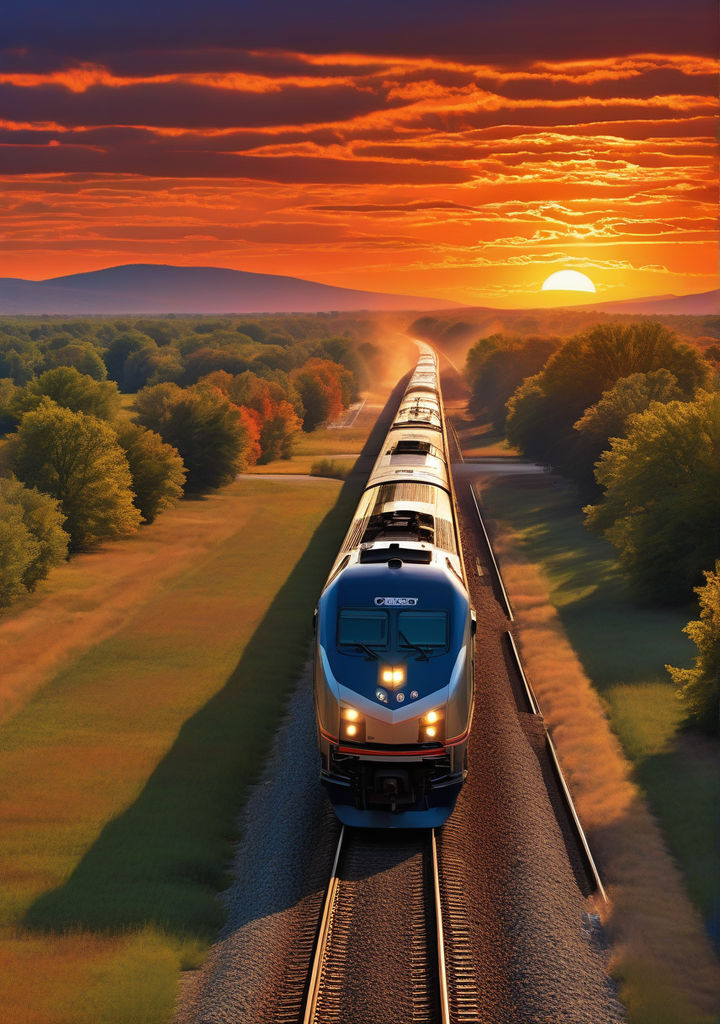
When it comes to train travel in the United States, Amtrak is a name that often comes to mind. But did you know that Amtrak operates more than 300 trains daily across the country? This extensive network connects numerous cities and regions, making rail travel a viable option for millions of Americans every year.
Amtrak’s Daily Operations
- Extensive Route NetworkAmtrak's daily operations cover an impressive range of routes, from the bustling Northeast Corridor connecting cities like Boston, New York, and Washington, D.C., to the scenic California Zephyr that travels between Chicago and San Francisco. Each of these routes contributes to the overall daily count of over 300 trains.
- Diverse ServicesAmtrak offers various services to cater to different travel needs:Regional Trains: Shorter routes within specific regions, such as the Northeast Regional.Long-Distance Trains: Cross-country routes like the Empire Builder and Crescent.High-Speed Trains: In certain areas, Amtrak’s Acela Express provides faster service, particularly in the Northeast Corridor.
- Regional Trains: Shorter routes within specific regions, such as the Northeast Regional.
- Long-Distance Trains: Cross-country routes like the Empire Builder and Crescent.
- High-Speed Trains: In certain areas, Amtrak’s Acela Express provides faster service, particularly in the Northeast Corridor.
- Passenger ExperienceWith over 300 trains running daily, Amtrak provides a range of amenities to enhance passenger comfort. These include free Wi-Fi, spacious seating, and dining options. On some routes, passengers can enjoy scenic views that highlight America's diverse landscapes, from rolling plains to mountainous regions.
Impact on Travel and the Economy
- Connecting CommunitiesAmtrak's extensive network helps connect urban centers with rural areas, fostering economic activity and enabling easier access to different regions. This connectivity supports local economies and provides vital transportation options for those without access to personal vehicles.
- Reducing Traffic CongestionBy offering an alternative to road travel, Amtrak helps alleviate traffic congestion on major highways and reduces the overall environmental impact of transportation. Trains are generally more energy-efficient and produce fewer emissions per passenger compared to cars and airplanes.
- Boosting TourismMany of Amtrak’s routes pass through scenic and tourist-friendly areas, which helps boost local tourism industries. Cities and towns along the routes benefit from increased visitor traffic, which contributes to the local economy.
Challenges and Future Developments
- Infrastructure and MaintenanceOperating over 300 trains daily requires a robust infrastructure. Amtrak continually invests in maintaining and upgrading tracks, stations, and rolling stock to ensure safety and reliability. Challenges include managing aging infrastructure and dealing with congestion in busy corridors.
- Service ExpansionAmtrak is also focused on expanding its services and improving its reach. Future projects include introducing new routes and enhancing existing ones to better serve passengers. Efforts to modernize facilities and rolling stock are ongoing, aimed at increasing comfort and efficiency.
- Funding and SupportLike many public transportation systems, Amtrak relies on federal funding and support. Ensuring continued investment is crucial for maintaining and expanding services, as well as for keeping ticket prices affordable for passengers.
FAQ
Q: How many passengers does Amtrak serve daily?A: Amtrak serves approximately 85,000 passengers daily across its network, making it a significant player in the U.S. transportation sector.
Q: What is Amtrak's most popular route?A: The Northeast Regional, which connects Boston, New York City, Philadelphia, and Washington, D.C., is one of Amtrak’s most popular routes due to its high frequency and key urban connections.
Q: Are there discounts available for Amtrak travel?A: Yes, Amtrak offers various discounts, including those for seniors, military personnel, and students. Additionally, there are promotions and advance purchase discounts available throughout the year.
Q: How does Amtrak handle delays?A: Amtrak strives to keep delays to a minimum, but unforeseen factors like weather or track issues can cause delays. Passengers are informed of delays through announcements and updates on Amtrak’s website and mobile app.
Q: Can I bring my pet on Amtrak trains?A: Amtrak allows pets up to 20 pounds on certain routes with its Pet Program. There are specific guidelines and fees associated with traveling with pets, so it’s best to check Amtrak’s website for detailed information.

